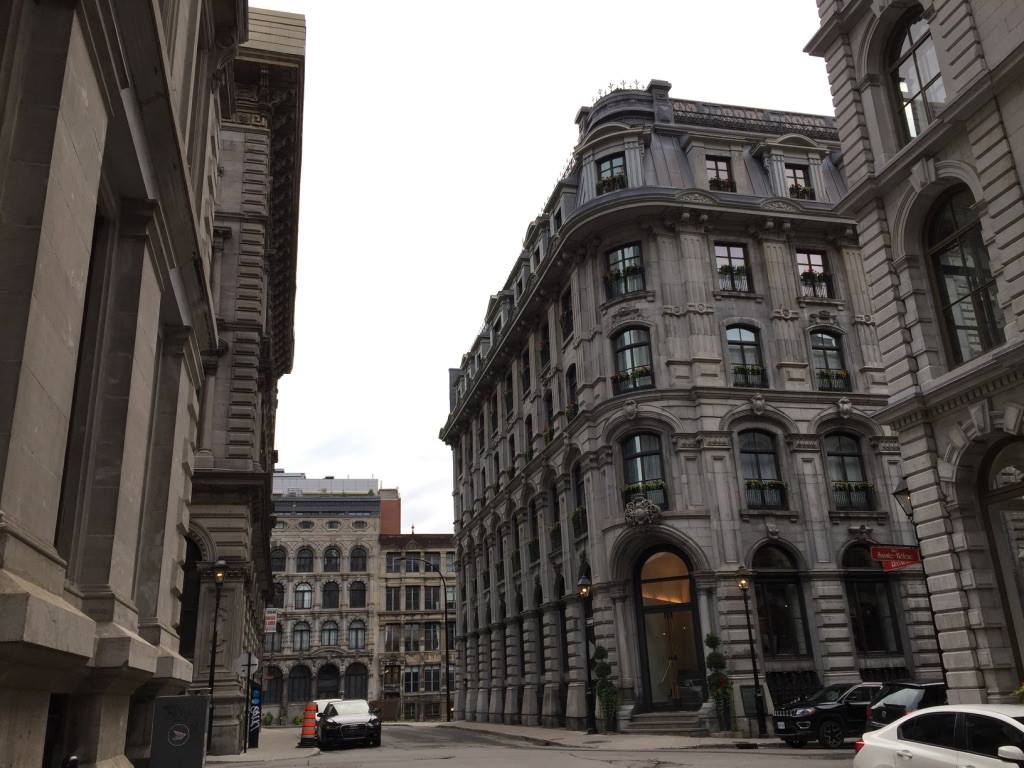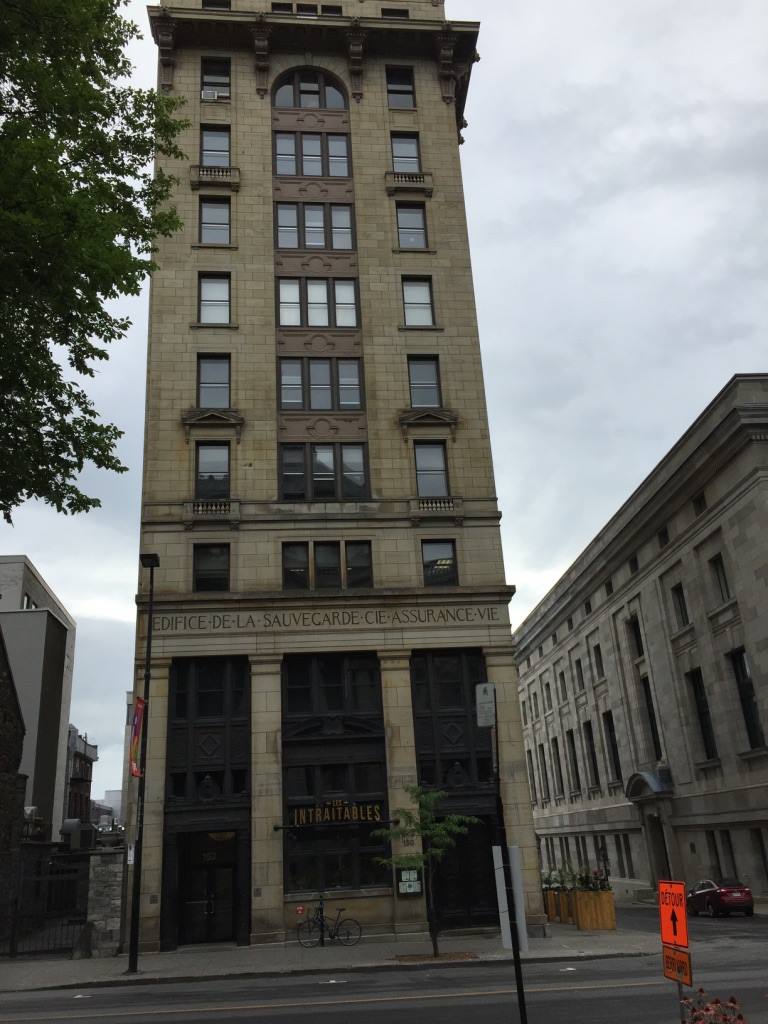My final day I went to explore the old section of the city. I had planned to visit a museum and historic houses so had to the leave the pugs at the hotel. That meant I could pack a lot into the day. This is a long post that incorporates the places I visited. The pugs had had a lot of action the previous day so they were happy to sleep. Walking east toward the port I came across a few boutique hotels like The Hotel Gault.

The Old Courthouse, built in 1885. This is the back of the courthouse and offers this large grassy area.

It was built in stages – adding a 4th floor and the the left and right annexes. There is a tunnel connecting it to another building across the street.

Front of the Old Courthouse. I was hoping for a tour but couldn’t find the starting point. Looks like there were renovations going on but no signage.

The Sauvegarde Building – part of the history of Quebec Economic Nationalism. It was the site of the first Stock Life Insurance company controlled by French Canadians – 1901. Becasue of the court house across the street – many law firms filled the building over the years.

House built in 1800 it was restored in 1969 and converted to an art centre.

Edward William Gray’s house. He was a merchant and sheriff. The house was built in 1773 and typical of the style of New France. Both buildings were restored in 1972. However, I took this because of the condo on the left. The warehouse was demolished and a condo built in its place. Even Montreal is susceptible to the condo developers destroying heritage buildings.

Place Jacques Cartier. – a wonderful spot to rest and soak up the history. That is the Nelson Column in the distance. It celebrated Lord Nelson’s victory and Tragalgar and was erected before the one in London, England.

As part of the 375th anniversary, the city had developed an “augmented reality” app. At certain spots I would point my phone camera and there would be historical information about that spot. This shows pictures of Place Jacques Cartier in 1809 as a bustling market place.

Rue Saint-Paul is the oldest commercial street. It was designed in 1673 as the streets were laid out for Ville-Marie (Montreal). Named in honour of Maisonneuve – founder of Montreal. On the left is looking east. On the right – looking west on St. Paul. Fur traders and merchants established themselves. In the 19th Century, banks, theatres, hotels, markets and shops turned the street into the place to be seen.


1836 – the Rasco Hotel. Charles Dickens stayed here when his play was being performed across the street.

1847 – The Bonsecours Market – once one of the largest public markets in North America. Exhibitions, concerts, public meetings and theatre productions.


The house of Louie Joseph Papineau. He was the leader of the Patriot Party. He represented Lower Canada in negotiations with England. The house was the target of vandals loyal to the crown. Saved from destruction by musician Eric Maclean and restored to its original. It is now a national historic site.

Pierre Du Calvet house – built in 1770 it is typical of the houses built after the fire of 1712, stone walls, metal roof and slopes to prevent the propagation of flames.

Sir George Etienne Cartier National Historic Site. The family first lived in the house on the left in 1848. In 1862 they also occupied the one on the right. He was a Father of Confederation, representing Quebec’s interests in the founding of Canada.


Notre-Dame-de-Bon-Secours Chapel – The Sailor’s Church. As the port of Montreal devloped the chapel became a stopping point for sailors. There are little wooden ships hanging from the ceiling – votive offerings from those sailors.

The church also contains a museum to Marguerite Bourgeoys. This relief designates the site of the first school house in Montreal, founded by Marguerite.

I took the museum tour which included the main rooms, the tower and the crypt. She founded an uncloistered colony of nuns – then being able to go out into the community to do their work.

In 1982, Pope John Paul II canonized her as Saint Maguerite Bourgeoys. As a result the museum was established which includes these miniatures showcasing the life of Marguerite. There are over 60 of these glass boxes, each with a label designating what they are.

It was time to climb the stairs to the tower. The room at the top of the stairs describes her life. She crossed the Atlantic 7 times in pursuit of her religious work. There are two levels to the tower. The first level looking west to the dome of the market. Originally there were 14 angels but 7 of them were removed to prevent the weight crashing through the roofs.

Looking up to the top level and the statue of “Our Lady of the Harbour”

Panoramic shot of the St Lawrence harbourfront

Looking west.

The final leg of the tour was the crypt. The Montreal limestone used for the crypt was not easy to work with. It took great skill to layer the soft stone. The stone work had been covered but the 1996 renovations removed the covering to expose the stone.

The original cornerstone

Attempted a pano of the crypt. There is an archeological site in the next room that has the original 1675 foundations of Marguerites first chapel.

The next day it was time to head home. Took a walk into the next door walkway to get coffee. We found a piece of the Berlin Wall. Since I don’t think the pugs and I will make it to Berlin, we had to get a photo.
